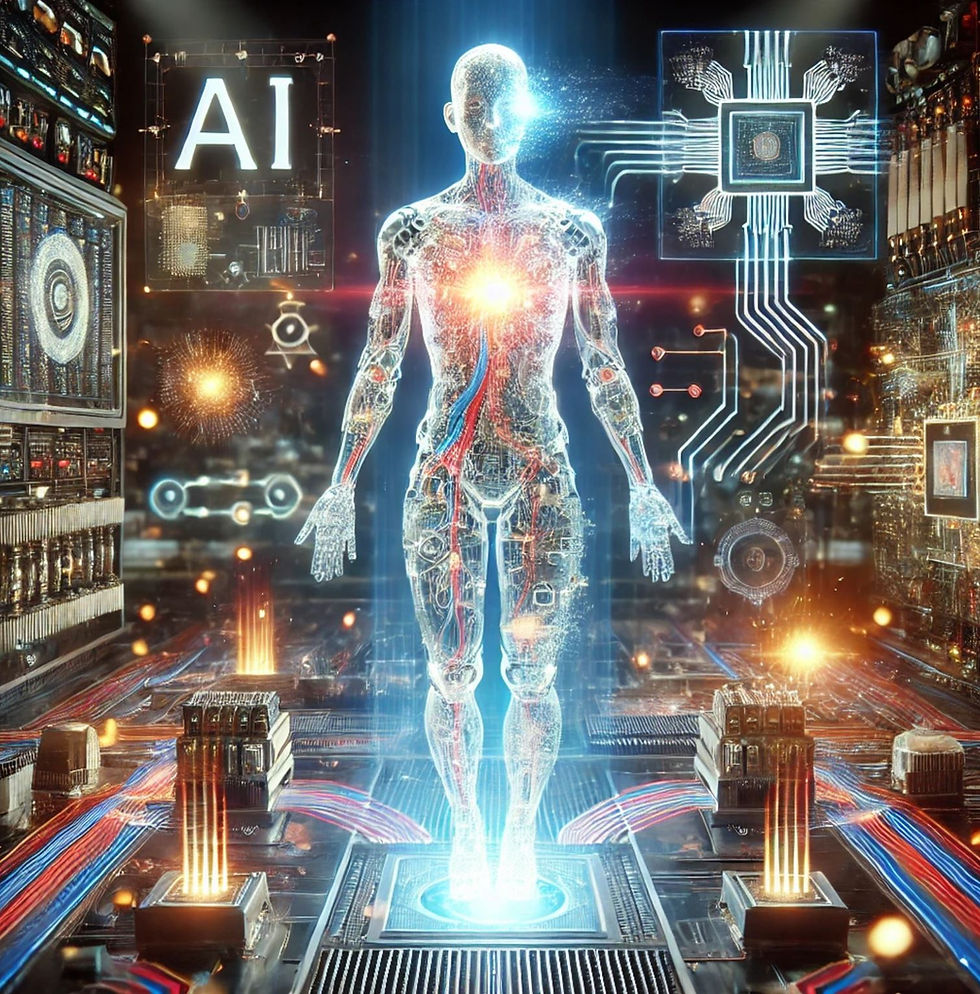Artificial Intelligence (AI) in Electrical Systems
- Ian Shaw

- Sep 17, 2024
- 2 min read

AI's integration into electrical systems is transforming the field, making systems smarter, more efficient, and capable of self-optimisation. The push toward automation, predictive analytics, and real-time decision-making is driving this trend, especially in areas where traditional methods are insufficient for managing complex data or optimizing processes.
Why It's Trending:
Smart Decision-Making and Automation: AI enables electrical systems to make real-time decisions autonomously, optimising processes like load distribution in power grids or energy usage in smart buildings. This reduces human intervention and allows systems to adapt to changing conditions without manual input.
Efficiency and Optimization: AI-driven optimisation algorithms allow for more efficient use of resources, from power consumption to network bandwidth. AI can learn from historical data, predict future demand, and adjust electrical system parameters to achieve peak performance with minimal waste.
Complex System Management: Electrical systems are becoming more complex, especially with the rise of renewable energy sources, electric vehicles, and decentralized grids. AI helps manage these systems by predicting failures, balancing loads, and making proactive adjustments.
Key Areas:
AI in Control Systems: AI algorithms are used to improve the precision and adaptability of control systems in industries like manufacturing, energy, and transportation. Machine learning models help optimize system responses, making control systems more flexible and efficient.
Example: AI can fine-tune motor control in industrial machines, improving energy efficiency and reducing wear and tear.
Predictive Maintenance: AI models analyze data from sensors embedded in electrical equipment to predict when a component might fail, allowing for proactive maintenance. This reduces downtime and maintenance costs by preventing unexpected failures.
Example: Power grids and electrical substations use AI to monitor equipment health, predicting transformer failures before they occur.
Smart Grids: AI is key in developing and managing smart grids, which can dynamically respond to energy demand and supply. AI algorithms help balance the load, integrate renewable energy sources, and ensure stability in the grid by making real-time adjustments based on power consumption data.
Example: AI-driven demand-response systems that automatically adjust electricity usage in homes and businesses during peak hours to prevent overloading the grid.
Robotics:Electrical systems in robotics benefit from AI in terms of navigation, task optimisation, and real-time decision-making. AI enables robots to perform complex tasks autonomously in industries like manufacturing, healthcare, and logistics.
Example: AI-powered robotic arms in production lines that adjust movements based on sensor data to increase precision and speed.
Applications of AI in Electrical Systems:
Energy Efficiency: AI optimises power consumption in industries and homes, reducing energy waste.
Grid Stability: AI ensures that grids remain balanced and resilient, especially with the integration of renewable energy sources like solar and wind.
Fault Detection: AI-based systems can detect electrical faults or inefficiencies faster than traditional methods, improving overall reliability.
Autonomous Systems: AI-driven electrical systems can operate autonomously in environments such as smart homes, factories, and transportation networks.
The adoption of AI in electrical systems is paving the way for smarter, more resilient, and efficient energy and control networks, making it a crucial area for both innovation and industry growth.



Comments